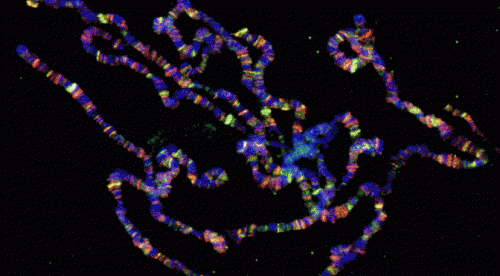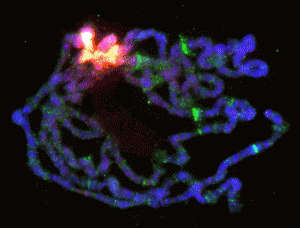What happens when good genes get lost?

Scientifically speaking, there is no bad DNA, though we like to blame it for unruly hair, klutziness or poor gardening skills. There is, however, junk DNA.
Heterochromatin are tight bundles of DNA that often contain the genes our cells want to keep quiet, either because they are not needed or they are repetitive. Heterochromatic genes are silenced by a muzzle-like protein while the gene cells we want expressed, called euchromatin, are activated.
Sometimes, an important gene—a gene we want activated—gets mistakenly embedded in junk DNA. Scientists have long wondered how those genes get activated. Now, Brandeis University researchers may have solved that mystery.
Michael Marr, associate professor of biology, published a paper in the journal Molecular and Cellular Biology this summer with John Lis of Cornell University, Jessica Treisman of the NYU School of Medicine and former Brandeis research associate Sharon Marr, now at the Massachusetts General Hospital.
Transcription of DNA into RNA is an insanely complicated process that is still not entirely understood. In the 1990s, Roger Kornberg, a professor of structural biology at Stanford University, discovered a huge, multiprotein complex he called Mediator, which helps activate transcription. Kornberg won the Nobel Prize for his discovery.
Mediator, which is present in every eukaryotic organism from yeast to humans, is composed of dozens of subunits. However, some of the subunits are found only in animal cells. One of these subunits, Med26, has long been thought to be a marker for active, euchromatin genes.

Yet Marr and his colleagues discovered Med26 in heterochromatin—the first time the subunit has been observed among inactive genes. Either Med26 is moonlighting in an entirely new role, says Marr, or it is there tracking down lost genes and activating them.
"It looks as though Med26 is tethered to the silencer and maybe activates essential genes that got lost in the junk pile," Marr says.
Marr and his team studied Med26 in Drosophila, the first time the subunit has been studied in an intact animal model. The team discovered that while cells and organs can develop without Med26, the organism as a whole dies if the subunit is removed.
"Med26 is essential for multicellular life and is involved in both active and silent genes," Marr says. "Exactly how is the next big question."
Journal information: Molecular and Cellular Biology
Provided by Brandeis University
















